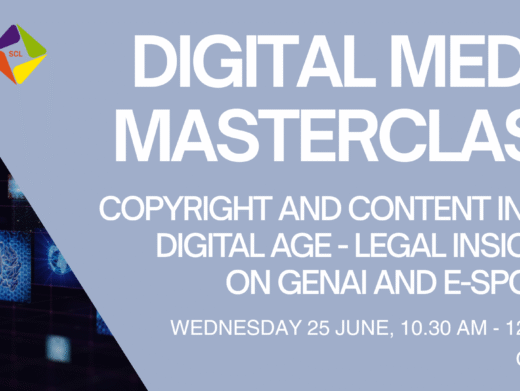Information is now recognised as a major business asset. Even if the accountantsdid, as usual, get there first with projects such as the Hawley Agenda, the keyrole of information in increasing efficiency and quality in the delivery oflegal services is now recognised by lawyers at all levels of practice. However,harnessing the power of information through the development of knowhow systemsremains for the majority at the conceptual stage. Discovering more abouttranslating that concept into reality was doubtless what drew together some 160members of the Scottish Group.
They were not to be disappointed. In his presentation, Bryan King, SeniorDevelopment Manager of Clifford Chance, clearly defined the parameters of theconcept and fleshed out the details without drawing his listeners into aquagmire of technicalities. By the end of his presentation, a number of thosepresent could clearly be heard rehearsing ‘Well, actually, I’m a legalinformation engineer’.
The Analysis of a Transaction
Bryan began by analysing a sample transaction from instruction to completionlooking at the information requirements arising and how these could be accessedthrough the kind of knowhow system Clifford Chance is developing. Firstly, thereis general background information (eg information about the target and relevantindustry sector). Secondly, there is transaction specific information accessedthrough checklists (key features, main phrases and documents) provided astemplates on the firm’s intranet. Further reference is available to basicmaterials such as books on screen or to external databases for materials such asthe take-over code, statutes, regulations, etc. Other materials to which linksare provided include internal practice notes, standard forms, precedents andreference material.
Should a legal query arise in the course of the transaction the system couldidentify anyone within the firm with relevant specialised knowledge, relevantcounsels’ opinions, other contacts, either UK-based or international. Thetransaction successfully completed, the system provides procedures for billingand links to the billing system. Information and transaction documents involvedin the transaction are then collected for future use. A number of these stagesare up and running and Bryan envisaged the system supporting all suchtransaction stages within three years.
Knowledge management is about making all this happen – providing the meansfor sharing knowledge and taking an individual’s expertise and making itavailable to others. The benefits are the collection and retention ofintellectual capital, allowing people to undertake a wider variety of activitieswithout having to be expert in everything, improving consistency and allowingfee-earners to work on value-added tasks rather than on repetitive research andwheel re-invention.
The Clifford Chance System
Clifford Chance’s Know-How system uses as a database Access 97 and SQL. Thesearch facility uses MS Index server text database (HTML versions of records)and an ASP/VB script intranet front-end.
The system holds different categories of information. The Know-Who systemprovides, through a personal Web page updated by the individual, basic levelinformation about everyone in the firm as well as areas of key expertise.
Transactional Information enables the firm, for example, to respond quicklywith a competitive tender for deals in corporate matters (mergers, acquisitions,etc) and international finance deals (such as bond issues and securitisations)and to complete the work in a short timescale. To provide access to thisinformation, the firm maintains specialist indexes with information such as thetype of transaction, parties involved, roles, salient features, business sector,jurisdictions, firm lawyers involved, source of business, fees, costs, recoveryrates, key dates and, increasingly, a link from the index record to thetransactional documents themselves.
Client Information Systems will be developed as individual sites storing allrelevant information – lawyers involved, billing arrangements, recenttransaction documents, financial information, who’s who in the client firm,key contacts, links to e-mail, news pages (from outside agencies) and theclient’s own Web site, and, of course, gossip (to be used with caution).
The system also provides access to checklists and standard documents. Thefirm sees checklists as being important in assisting more junior fee-earners inthe steps to be followed in a transaction. Checklists also tie together thevarious knowledge management systems and provide links to other documents.Standard documents fall into two classes. The first, which the firm callsTemplates, consists of agreed standard documents, non-client specific (egengagement letters, underwriting agreements, offer for sale, placing agreement,etc) which have been written by senior fee-earners and are accompanied bypractice and drafting notes and consequently can be considered to have a highlevel of added value and quality. Secondly, there are precedents which arereusable documents, generally tailored to meet the needs of a particular client.Quality assurance is less formal than in the case of template documents. TheKnow-How system enables the identification and abstraction of the 5% ofdocuments of knowledge value from a Documents Management System to whichClifford Chance adds hundreds of thousands of documents a year.
Information Capture
Ensuring the co-operation of fee-earners in supplying information to thesystem is essential. This requires the development of a sharing culture and thebuilding of information collection into work procedures. The process could betied into appraisal schemes (Stick) and contributions to the system could berewarded on a monthly basis with a bottle of champagne (Carrot). Bryan alsoemphasised the valuable contribution of the firm’s Information Officers in theinformation gathering process.
Quality and relevance of the captured data needs to be reviewed by acombination of people, procedures and system tools. The point of data entryoffers the opportunity to check existing documents. ‘Sell by’ dates can beset up. Feed back from users via e-mail should be encouraged. Monitoringintranet usage (web metrics) can identify what is being used or neglected.
Extranet Services
Clifford Chance made a strategic decision to move to Internet technology (viathe firm’s intranet) two years ago, for as much of the firm’s informationdelivery as possible. This reflected the increasing mobility of fee-earners aswell as the global nature of the firm. Increasingly important is the ability ofthe firm to share information electronically with clients and other parties.Bryan referred to the Susskind thesis which maintains that there will be a majorshift in the way that law firms operate, moving from being providers of legaladvice to clients on a one-to-one basis, to being publishers of legalinformation to many. Clifford Chance became the second firm after Linklaters tolaunch a Future-of-Law-style legal service across the Internet earlier thisyear. The service Nextlaw (nextlaw.com)offers to selected clients advice on data protection covering 30 jurisdictionsas it affects the international transfer of data between financial institutionsand as it affects multinational organisations. The firm believes that suchservices are likely to be generating 10% of fee income within five years.
Practical Advice
In conclusion, Bryan offered practical advice on how those attending mightset about developing a knowledge strategy for their own firms. The first step isto undertake an audit of existing information. Document Management Systems holda lot of knowhow, but identifying important documents will be necessary. A firmmight well already have key templates and best practice guides but Bryan warnedthat these are expensive (in terms of senior fee-earners’ time) to write andmaintain. CVs provide a good starting point for know-who. Knowledge arising outof day-to-day work (counsel opinions press releases, billing process, trainingcourses, etc) should be captured at source. It is essential to encourage aculture of sharing to persuade the possessors of knowledge and experience toparticipate with commitment from the top down. The next stage is to prioritisethe different categories of information on the basis of cost and benefit tofee-earners to start building the knowledge framework.
Bryan suggested that there is no one single solution to the question of howto make it all happen and that much will depend on existing office systems. Theessentials for the building of the intranet are file servers (which can befairly low specification PCs) with internet server software and a browser on thedesktop machine. Those who have embraced the MS desktop and back office routemay well find that they may already have many of the components. For example,Index Server for full-text indexing documents is part of MS Back office suiteand a Web browser is bundled with MS Office or can be downloaded off the Web.Finally, Bryan advised keeping the system simple, phasing implementation andmeasuring the effectiveness of what is provided.
The Scottish Group Committee would like to acknowledge with gratitudeClifford Chance’s generous sponsorship of this event.




